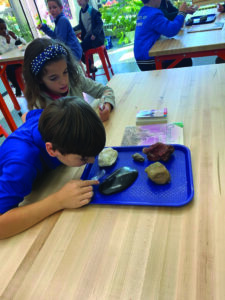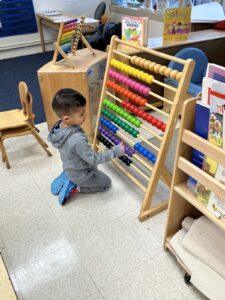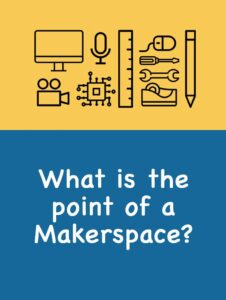Academics
While rigor is a term used often in education, its meaning varies greatly depending on who is using it. For those of us within the college preparatory, independent school world, one frequently reads or hears about programs, teachers, and/or curricula that are either rigorous or lacking thereof.
Read More ...Katie Jackson is in her second year of teaching at Renbrook. We interviewed her to learn more about her passion for learning and teaching.
Read More ...“SCIENCE: Because figuring things out is better than making stuff up.” This quotation from Neil Degrasse Tyson, is emblazoned on one of Howard Wright’s favorite T-shirts, and it sums up the core of scientific thinking. Evidence, tested and tried, is the basis of knowledge, not assumptions, hunches, or opinions. Skepticism, readiness to reconsider, and openness to new evidence are essential to scientific thinking, and our Upper School students live it every day.
Read More ...Olivia Goodrich, Upper School STEAM teacher, is all about inquiry-based learning. The process goes like this: start with a question; observe; gather data; generate more questions to guide further observation; continually revisit the same phenomenon to dig deeper; test your previous conclusions.
Read More ...We asked Jessica Wawzyniecki, Lower School STEAM teacher, “How does scientific thinking develop over the course of Grades One through Four?”
Read More ...In the Beginning School, children are naturalists. Our 75-acre campus beckons them to explore the outdoors and the creatures, plants, and rocks they find there. They are taught to stop, pause, and look more closely. Our youngest students are not bound by a curriculum; they follow their own discoveries and observations. Their teachers build on the children’s own curiosity to lead them into the process of formal inquiry.
Read More ...For the next several weeks, follow us as we explore the notion of scientific thinking. What do we really mean by scientific thinking, and how does it inform our teaching and learning at Renbrook School?
Read More ...As adults, we tend to overlook the complexity of the ability to make meaning from something we read because we have been doing it for a long time and because it happens automatically and instantaneously for so many of us. For children, though, especially during the elementary school years, there is so much involved in processing print.
Read More ...Enjoy Alana’s paper here.
Recently I read an article from U.S. News & World Report on how students can better manage an academically rigorous course load while maintaining a strong GPA. As those connected with education, kindergarten through higher ed, rigor is a term used often. Independent schools frequently use it in their mission statements and marketing materials. Programs, teachers, and/or curricula regularly are described as either rigorous or lacking thereof. There are countless studies and research articles touting the relevance and significance of rigor in 21st Century teaching and learning.
Read More ...When a child is presented with materials and given support with how to use new tools, there is no limit to what they might create. Last week Junior Kindergarten teachers, Mrs. DeConti and Miss Blenman, offered a new making tray at one of their table centers as morning work. Mrs. DeConti presented a hole puncher and showed the students how to use it. There was no model of what their work should look like, just room and space for open-ended exploration and construction. On hand were mini clipboards and paper for those friends that wanted to sketch out their ideas before executing them!
Read More ...

















